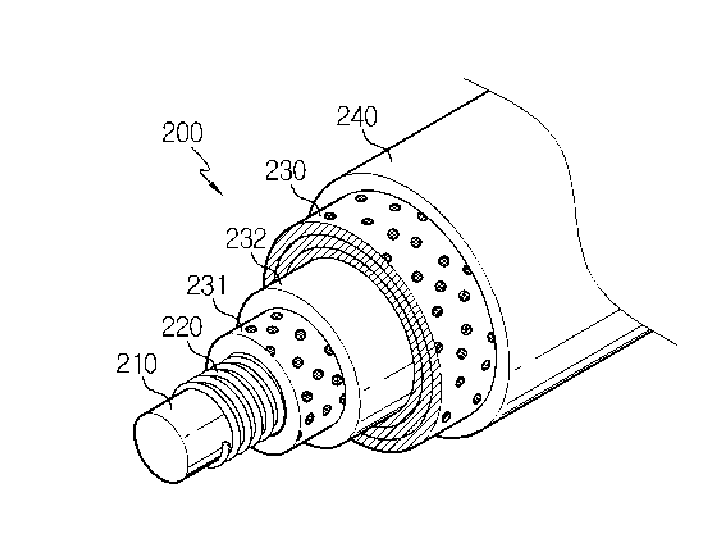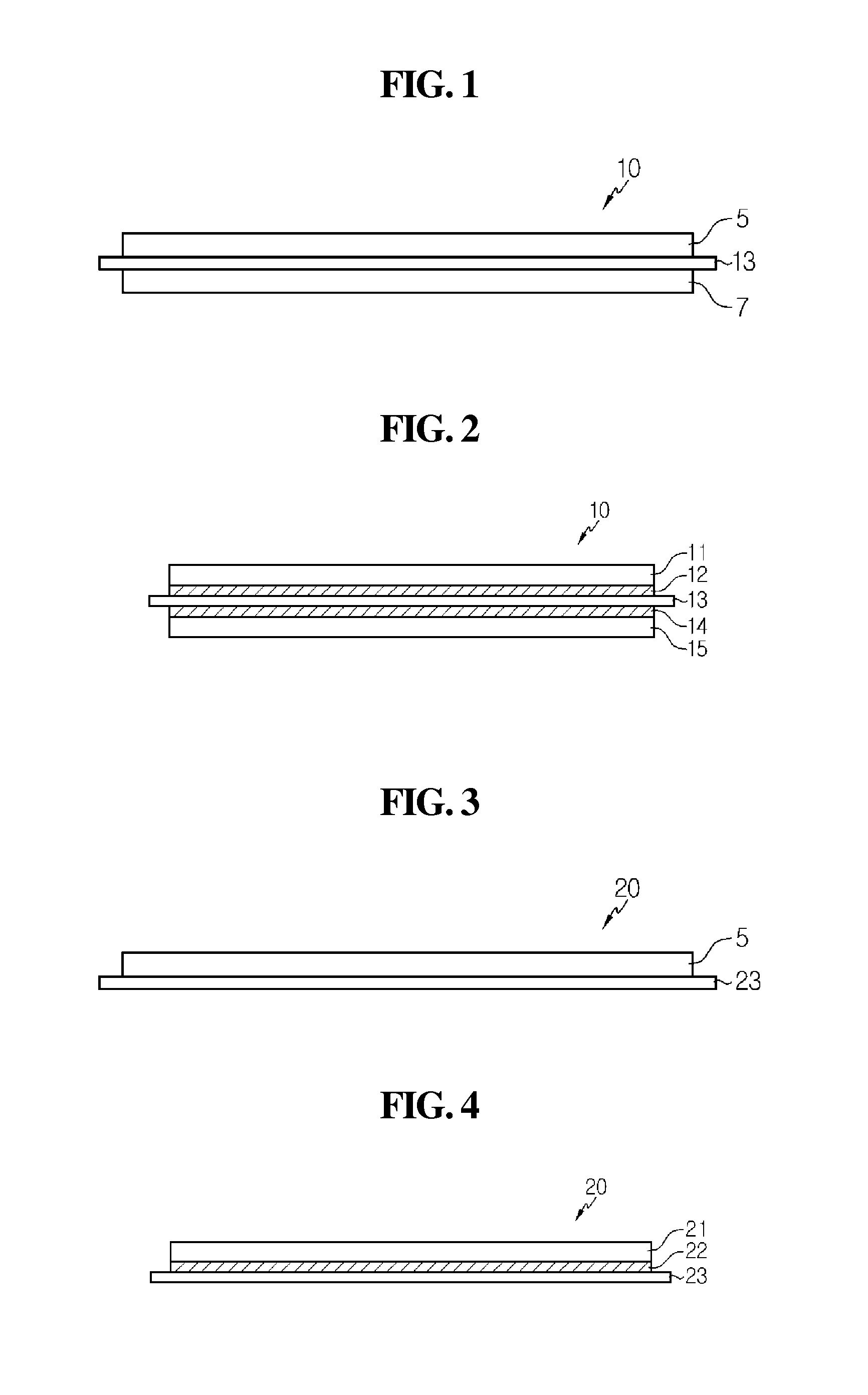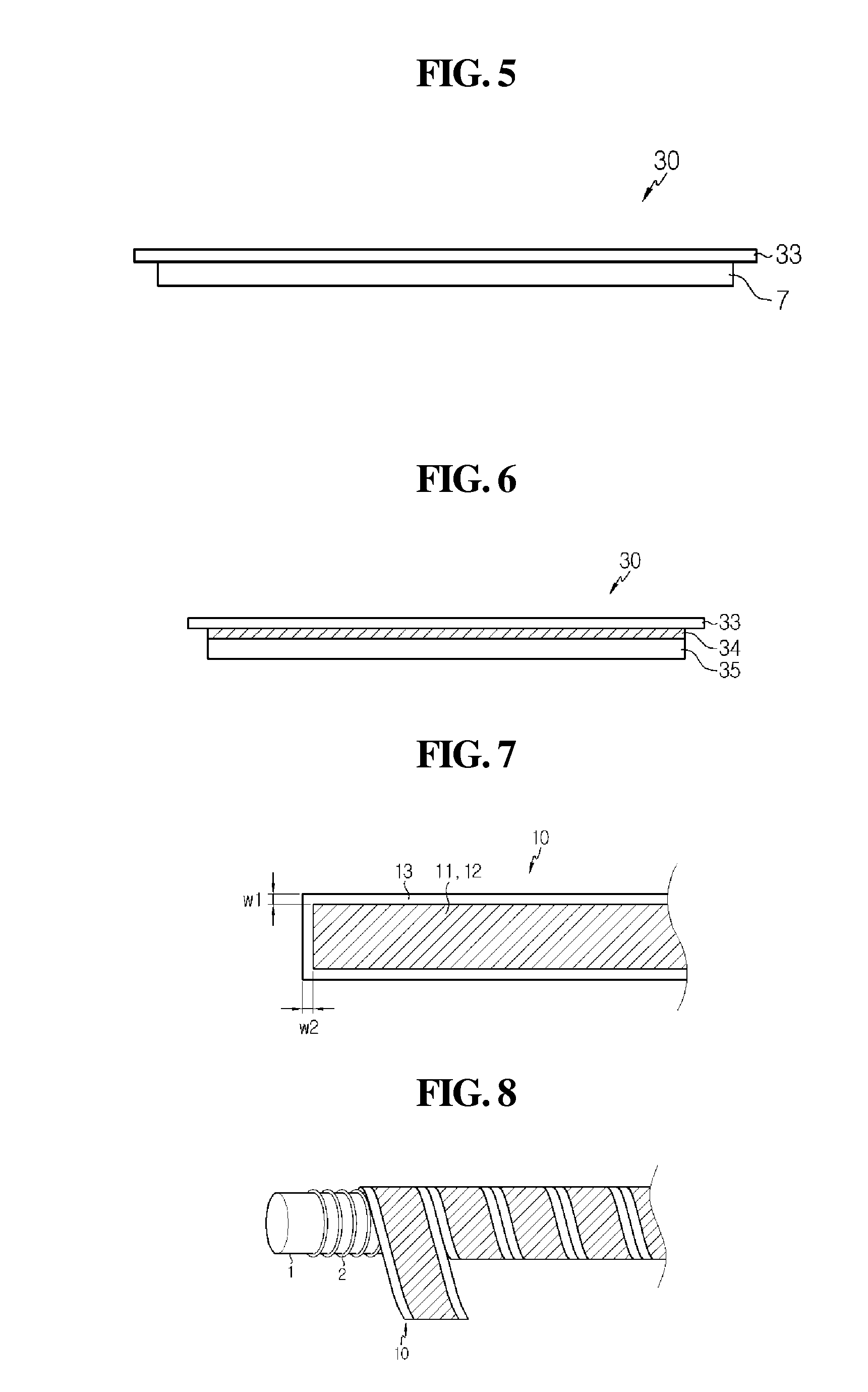Cable-type secondary battery
- Summary
- Abstract
- Description
- Claims
- Application Information
AI Technical Summary
Benefits of technology
Problems solved by technology
Method used
Image
Examples
example
[0194]Four Cu-wires having a diameter of 250 μm were wound with crossing with each other to obtain an open-structured inner electrode supporter in which a hollow core for supplying lithium ions in the form of a spring can be present.
[0195]Then, 70 wt % of graphite as an anode active material, 5 wt % of Denka black as a conductive material and 25 wt % of PVdF as a binder were mixed to obtain an anode active material-containing slurry. The slurry was coated on a Cu-foil and slit into a piece with a width of 2 mm, to obtain a sheet-form inner electrode (anode).
[0196]Meanwhile, 80 wt % of LiCoO2 as a cathode active material, 5 wt % of Denka black as a conductive material and 15 wt % of PVdF were mixed to obtain a cathode active material-containing slurry. The slurry was coated on an Al-foil and slit into a piece with a width of 2 mm, to obtain a sheet-form outer electrode (cathode).
[0197]Next, the sheet-form inner electrode was adhered with a sheet-form separator consisting of a porous ...
PUM
 Login to View More
Login to View More Abstract
Description
Claims
Application Information
 Login to View More
Login to View More - R&D
- Intellectual Property
- Life Sciences
- Materials
- Tech Scout
- Unparalleled Data Quality
- Higher Quality Content
- 60% Fewer Hallucinations
Browse by: Latest US Patents, China's latest patents, Technical Efficacy Thesaurus, Application Domain, Technology Topic, Popular Technical Reports.
© 2025 PatSnap. All rights reserved.Legal|Privacy policy|Modern Slavery Act Transparency Statement|Sitemap|About US| Contact US: help@patsnap.com



